Having been a prolific songwriter since early teenage years, multi-instrumentalist Peter Campanelli’s work is steeped in prog/psych and funk. Combining lo-fi tape recordings with manipulations digitally offers the listener intricate, personal music that is hypnotic.
With today’s release of the latest album Pesto Baby, Campanelli has retained the mindfulness of compositions whilst reaching for a hi-fi, streamlined and pop-oriented sound. Containing ten songs that amount to a dreamy and congruous experience, all written and performed and produced by Pete, the album is a thoroughly danceable affair. With the meat of the release being throwback pop sewn together with psychedelic seams, the record sounds as if it was a lost gem from a forward-thinking musician of a past era.
We recently spoke with Campanelli to talk more about the new album, influences, and much more.
Tell me a little about Pesto Baby.
Pesto Baby is a bit tough to describe succinctly. I’d like to say that it is my first attempt at a pop-oriented record. It’s more hi-fi than anything I’ve done; the arrangements are tighter and the songwriting is more intentional than my previous releases.
Who are some of your influences or favorite artists?
My number one of all time is Sly Stone. I first listened to There’s A Riot Goin’ On when I was 16 and I’ve heard it about a thousand times since. It always sounds as fresh and exciting as it did upon first listen. His use of layering in his arrangements is huge for me. The funk elements of Pesto Baby definitely stem from my love of his work.
Another big influence for me is Laura Nyro. Her approach to songwriting is so innovative and inspirational. I adore her manipulations of tempo and her lyrical honesty.
I also have to credit Stevie Wonder for a lot of the sonic ideas. His use of the talkbox and adventurous harmonic progressions definitely informed a lot of the decisions I made on this record.
In addition, my favorite genre of music is jazz so that is always an influence on my songwriting. I really admire players like Grant Green. He has such a lyrical approach to soloing; it’s something I try to emulate when I play a solo.
How did you learn to play a various array of instruments?
I took piano lessons for a few years as a young child. Eventually, I became frustrated with playing classical music and turned to the guitar. I took some private lessons here and there and did the thing every kid does when they first get into rock music (google the tab for Sweet Child Of Mine). In the middle school band, I played percussion and eventually drum set for the jazz ensemble.
In high school, some friends of mine were starting a band and needed a bass player. I was like, “I play guitar, that’s the same as bass.” I quickly learned they are totally different instruments in regard to the role that they play in an ensemble. I grew to adore the role of the bass instrument and started to play it in my high school jazz program. During that time, I also fell in love with jazz harmony and studied the way the chords and melodies relate to each other. I’m a huge nerd about music theory. I spend a lot of my free time thinking about the emotional response of intervals and chords and progressions. I could gush about it for hours and bore everyone within earshot.
Whilst all those things were happening, I was working on each individual instrument in my free time. Playing in bands definitely was the catalyst for improving quickly on every instrument though. In the past two years, I’ve been really working on my drumming.
What is something you want to convey with the release of Pesto Baby?
There are a lot of lyrical ideas in Pesto Baby that I want to get across. I talk about interpersonal relationships, mental illness, the corrupt socio-political environment of the United States and simply trying to sustain yourself under the intersection of those things. There are lyrics about wanting to help people who are more disadvantaged than myself but feeling crushed under the weight of capitalism and being unable to provide any meaningful support. There are lyrics about my growing distrust of men as a queer person; the way I’ve been hurt so they can learn how to be a better human. There are lyrics about trying to discern perception versus reality from the point of view of a mentally ill person. There are lyrics about the response the brain has to trauma and the condition of making the same mistakes while expecting a different outcome. Though lyrically heavy, the music is intended to be fun. I want to make people dance in their bedrooms. But I also want to convey my own experience with personhood.
What does this release mean to you?
It means a lot. It was a stretch for me to write something so personal while trying to sonically convey a degree of accessibility without compromising my own interests in more obscure forms. It was a huge learning experience. It is the first commercial release I’ve recorded entirely on a DAW. I’m super grateful to be working with Youth Riot Records in Seattle because they’ve been extremely supportive of my work and have taken all the stress away from having to make my own physical copies of the release.
How would you describe your band in three words?
Earnest, whimsical, comprehensive.
Has the Seattle scene been influential to you in terms of making music?
Seattle has been great to me. It has a large DIY music scene which is somewhat new to me. But I’ve grown into myself in a loving way with support from lovely people. Feeling comfortable to explore my identity has been a crucial part of continuing to create music. There are also so many amazing local acts here in Seattle. For example, 129,600 has been incredibly inspiring to me as a songwriter. Two of the members of that group also play in my live band for this project. It’s humbling to play with them. I’m very grateful to be a part of such an exciting art community.
What about the Saint Paul MN scene?
The Twin Cities music scene is quaint, but it was pivotal to my initial growth as a recording artist. My close friend Austin Lombardo introduced me to the idea of home recording. When we were teens, he had a four-track cassette deck that he used to make these visceral tunes. It inspired me to start experimenting with recording. I began with just recording to GarageBand through my laptop microphone. I eventually moved to own a tape deck of my own. I credit him as my inspiration to become a recording artist. He continues to record to tape and makes lovely music. There are so many great musicians in the Twin Cities that continue to inspire me. An acquaintance of mine named Lynn Avery released a project recently with her band Iceblink (https://iceblink.bandcamp.com/album/carpet-cocoon) that I’ve been bumping a lot lately.
What are you looking forward to most with the release of Pesto Baby?
I’m looking forward to it being a finished product. I hope some people can relate to the themes of the lyrics and also enjoy the sonic landscapes I’ve attempted to create. I worked tirelessly on it for about two years and I’m ready to move onto the next project. I continue to grow constantly and I am ready to create some new sounds.
You spent some time studying at the Berklee School of Music in Boston. What would you say were some of the takeaways after your time was up?
I attended Berklee for about one year playing bass guitar. I analyzed the cost of the tuition versus what I was really getting from the experience and dropped out rather quickly. I was also not mentally stable at that point in my life and the stress of school was exacerbating my symptoms. I would advise most artists to not go to art school. It is an unreasonable amount of work, it’s expensive on a predatory level, and it trains you to be an industry professional rather than an artist. I’ve always been more interested in making art than profiting from it.
My biggest takeaway from Berklee was working and playing with people who were much more proficient musicians than myself. I recorded my previous release Horseback Record during my time there and was lucky to have some fellow students contribute to the project. For example, Milena Casado plays a world-shattering flugelhorn solo near the end of the first side of the album. She is an incredible jazz musician and I feel so honored that she contributed to my art. You will see her doing big things in the jazz world.
I am grateful to have worked with people like that. That would probably be the biggest benefit of attending an institution like Berklee. The classes you take there are really things anyone can learn with access to the internet and enough dedication. You’re really paying for the opportunity to be exposed to incredible players and professors who work in the industry. I wouldn’t say it is worth the price tag.
What were some of your earliest memories involving music?
I remember dreading music for a long time. Being raised on classical piano, I was so bored by music. I felt like music was this historical, sacred thing that could only be created by intellectual people. As a self-described fool, it seemed like something that wasn’t worth pursuing. I felt I would never be good enough to create or perform something worthwhile.
I actually wanted to be an actor for a long time and spent a great deal of my youth in musical theater. But after branching out to other instruments and learning about jazz harmony, I realized music isn’t a concrete box that has explicit rules like the tonal harmony system suggests. Sure, Bach is great. But so are The Shaggs. Sound has a profound impact on the human experience and I think anyone can create worthwhile art if they approach it from the right place.
You worked on the new album for about two-plus years. What would you say was the biggest hurdle putting the album together?
The biggest hurdle was definitely my own perception of what I thought the record should be. As I mentioned earlier, I was at a point in my life where I was relearning how to be a person. I was also attempting to take on a genre I had no real experience creating. It was a huge learning curve.
Additionally, I am a perfectionist which delays the process. I continually rework and remix the recordings I have. I want to get my ideas across in a specific way and that takes a lot of revisions. It is not atypical for a record to take around two years to become fully realized.
What was the driving force to moving to Seattle, besides the rich history of the music?
I moved to Portland, OR after I dropped out of college. I found housing close to my work that was affordable. I lived in that shoebox-sized room for a few months while working in a restaurant.
However, the living situation was totally unhealthy as I had roommates with serious addictions who would pressure me to use hard drugs. I had plans to move in with some friends but they let me down in a big way. It was an all-around bad time. I felt stuck. I mean, what was a baby supposed to do?
Luckily, my old friend Shane informed me of a room opening in a DIY house venue in Seattle. I had met some of the people living there while playing shows around the PNW. I took all my savings and rushed up to Seattle as quickly as I could to escape my dreadful living situation.
I’ve been living in the same house for about two years and it has been lovely. I can record music here and hold rehearsals with my various bands in the basement. I also play drums in Shane’s band Chanel Beads (https://chanelbeads.bandcamp.com/) which has really improved my drumming for the recording of “Pesto Baby”. I feel incredibly thankful to live in such a wonderful city with such a vibrant art community.



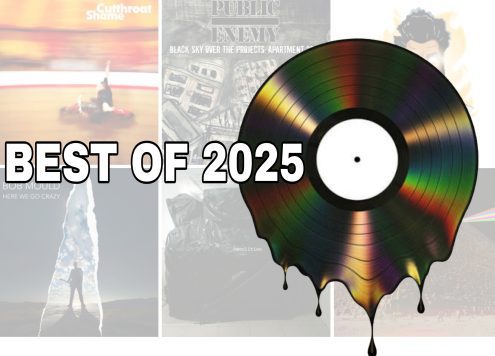

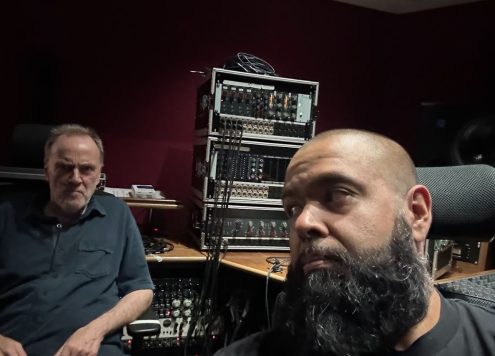
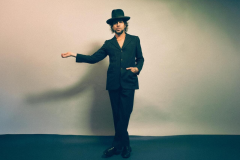
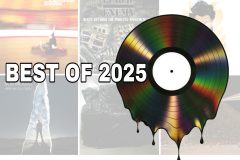
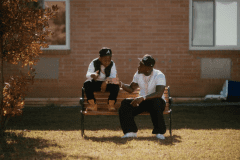


Social Media